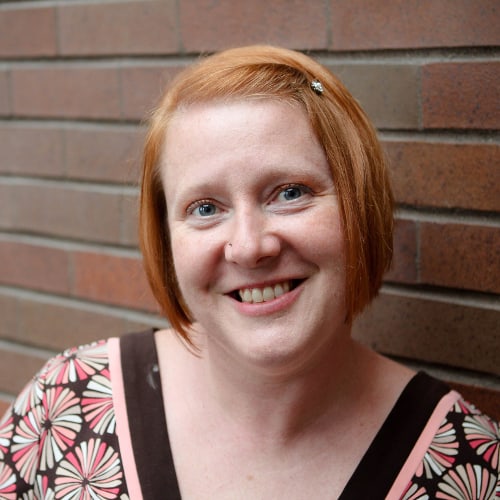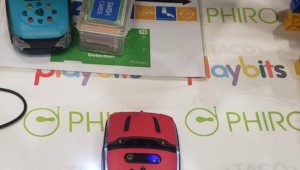Building Confidence and Curiosity with littleBits Code Kit

When you have a nine-year-old son whose reason for living is coding, a Google Hangout on a Thursday afternoon with an actual product designer, is a life event, something I’m sure my son Oliver is hoping will lead to future job offers. From the enthusiasm of their conversation to the promise to keep in touch, I’d say Oliver’s first real networking event went very well. David Sharp, Lead Product Designer at littleBits, spoke with us for nearly an hour, sharing his obvious passion for innovation and a keen understanding of the creative person’s desire to “level up” whenever possible, to always say, “Yeah, this is great, but . . .” leading to a constant learning cycle. The littleBits mission is so exciting, it is worth sharing in its entirety:
“Let’s empower the next generation to have the creative confidence & curiosity to always ask why. To test ideas without fear. To take feedback without ego. To use their brains and hands to solve real-world problems when there isn’t a clear right answer. With littleBits, kids learn how to be more than just consumers of technology. They become inventors.”
The fact is, littleBits is an easy-to-use electronic building blocks platform that is challenging enough to keep my son engaged, yet easy enough for me to follow and comprehend so that I would easily be able to share with my classroom. This dichotomy of challenging yet accessible is no accident, as the app and its component bits in the building kits were tested and approved by an educator advisory council that met monthly, and the designers visited classrooms in the NYC area to see what implementation would actually look like.
One of the most telling stories in our conversation is about the microsite for educators using the new code kits. David had noticed that teachers were copying the lesson plans the company was creating into Google Docs so that they could adjust and innovate as their classroom required. Instead of being offended, littleBits responded by now providing all lesson plans in Google Doc and Google Slide form so the teachers introducing coding and making to their students have the same freedoms to “level up” as the entire platform promotes.
As if I wasn’t already blown away, we ended our conversation with David explaining that the philosophy of littleBits was to “provide new areas of exploration, moving into the realm of being able to tell stories, for kids who want to do more, including musical expression.” The site has excellent tutorials, and I was able to create with inputs and outputs. However, the true test came when Oliver opened what is called a “Blank Canvas.” Here’s what he did. The website promotes this type of free style innovation; when you create, you can add to the littleBits website gallery, and see what other creators are up to.
If you are starting to think this might be too complex for you, or if you aren’t ready, that’s where the tutorials come in. Here’s an example that helped me get started. The instructions are easy, the tutorial entertaining, and I can easily see using it in my own classroom. Even though I teach ELA, I would love to use coding and making as a part of a “How to” assignment, where students are required to create step by step directions. I think the tutorials are a great example of this type of communication, and clearly, a skill that will be needed as we continue to move towards global citizenship.

This isn’t a typical review, but this isn’t a typical product. Instead, as impressive as the app and website are, the coolest part of littleBits is the belief system at its center. Throughout our conversation, David was explaining to us how to get started and provided us the backstory. Within that though, is a belief in the very process of creating and exploring. As one does when writing about a person, I looked David up on LinkedIn, and a part of his profile has really struck me:
“Everything has the potential to be a building block for some new and surprising creation. The whole world is a construction kit. Currently, my work focuses on helping people rearrange the pieces of our world into new ideas and devices.”
Then, it occurred to me why I loved littleBits so much. It isn’t just what the kit brings to you, but rather, it is what you bring to the experience of design and learning that matters. The difference between this philosophy and other construction or maker kits I’ve observed Oliver experiment with is that it is crucial who Oliver is, and that is exactly the same philosophy I have for a classroom. Check out littleBits coding kits here, and find out what you can bring to the world of coding.
For more see:
- Infographic | The Rise of Maker Ed
- Smart Review | littleBits STEAM Student Set & STEAM Teacher PD
- Smart Review | Science Popularity Picks Up Steam with littleBits STEAM Student Set
- Smart Review | Sparking Student Coding Skills with the Sparki Robot
littleBits provided the STEAM student set and access to online PD for this review. If you are interested in having GettingSmart.com review your product or book, please contact [email protected]





0 Comments
Leave a Comment
Your email address will not be published. All fields are required.